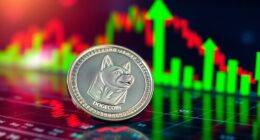Have you ever wondered why we call it a "bear market"? The term isn't just a catchy phrase; it carries historical significance that reflects the fears of investors during downturns. Originating from the notion of "selling the bear's skin before catching the bear," it symbolizes uncertainty and caution. But there's much more to this term than meets the eye. The story behind it reveals deeper insights into market behavior and investor psychology.

When you hear the term "bear market," it often signals a significant shift in the financial landscape, typically marked by a price decline of at least 20% from recent highs. This dramatic drop often lasts for months or even years, leaving investors feeling uneasy.
As the market turns bearish, you'll notice a notable shift in investor sentiment—from optimism to fear. This change leads to reduced buying activity, as many hesitate to jump in when prices are falling.
During a bear market, trading volume usually declines. Both retail and institutional investors become cautious, opting to hold off on making new investments. Economic indicators like employment rates and GDP growth may start showing signs of weakness, adding to the overall anxiety.
You might also find that news and media narratives focus heavily on negative aspects of the economy, reinforcing the prevailing bearish sentiment. This constant barrage of pessimism can make it hard to see any silver lining.
The term "bear market" itself has an interesting history. It likely originated from the practice of "selling the bear's skin before catching the bear," a reference to short selling. The phrase was solidified in Thomas Mortimer's book "Every Man His Own Broker" in 1761.
Historically, bear markets have had significant global impacts, with the worst one following the Mississippi/South Sea Bubble in 1719. The bear symbolizes hibernation, representing a market in a dormant or declining state, contrasting sharply with bull markets characterized by optimism and growth. Bear markets serve as a natural part of financial cycles for market recalibration, allowing for necessary adjustments.
Economic downturns, bursting market bubbles, and geopolitical factors like wars or pandemics often trigger bear markets. A drop in investor confidence can signal the onset of such a downturn, while changes in government policies—like tax rate adjustments or shifts in federal funds rates—can further exacerbate the situation.
Despite the challenges a bear market presents, it can also offer unique opportunities for savvy investors. You might find that these periods can serve as excellent buying opportunities if you're patient enough.
Strategies like short selling or investing in inverse ETFs can help you profit from falling prices. While navigating a bear market can be tricky, maintaining a long-term perspective and adjusting your portfolio for risk management can ultimately help you weather the storm effectively.
Understanding the reasons behind the term "bear market" can empower you to make informed decisions.









